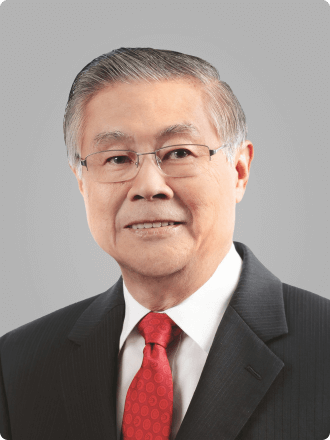The stablecoin market has evolved beyond the dominance of USD-pegged tokens. Regional currencies are gaining traction as governments and financial institutions recognize the potential of blockchain-based digital assets. Among these emerging alternatives, XSGD stands out as a pioneering example of how regulated stablecoins can bridge traditional finance with decentralized networks.
XSGD represents more than just another digital token; it’s Singapore’s entry into the regulated stablecoin ecosystem. As businesses and individuals seek stable, compliant digital currencies for cross-border payments and DeFi activities, understanding XSGD’s unique position becomes increasingly important for anyone operating in the Asia-Pacific digital economy.
This comprehensive guide explores how XSGD works, its regulatory framework, practical applications, and why it matters for the future of digital finance in Asia.
What Is XSGD?
XSGD is a Singapore Dollar-backed stablecoin issued by StraitsX, a subsidiary of the Southeast Asian fintech group Fazz. Unlike algorithmic stablecoins that rely on complex mechanisms to maintain their peg, XSGD operates as a fully reserved stablecoin, meaning each token is backed one-to-one by actual Singapore Dollars held in reserve.
Launched in 2020, XSGD serves as a digital representation of the SGD on various blockchain networks. The stablecoin maintains a consistent value relative to the Singapore Dollar, making it an attractive option for users who want to transact in SGD without the volatility associated with most cryptocurrencies.
What sets XSGD apart from other stablecoins is its regulatory compliance within Singapore’s financial framework. StraitsX operates as a Major Payment Institution under the oversight of the Monetary Authority of Singapore (MAS), ensuring that XSGD meets strict regulatory standards for consumer protection and financial stability.
The stablecoin is currently available across multiple blockchain networks, including Ethereum, Zilliqa, XRP Ledger, Polygon, Arbitrum, Base, Avalanche, and Hedera Hashgraph, providing users with flexibility in how they access and use their digital SGD holdings.
How Does XSGD Work?
XSGD operates as a secure and transparent digital representation of the Singapore Dollar (SGD), leveraging blockchain technology to enable fast and cost-efficient transactions globally.
Fiat-Backed Trust
The fundamental mechanism behind XSGD is straightforward: for every XSGD token in circulation, StraitsX holds one Singapore Dollar in reserve accounts maintained by established banks, including DBS and Standard Chartered. This one-to-one backing ensures price stability and provides users with confidence that their digital tokens represent real-world value.
When users want to mint XSGD tokens, they deposit Singapore Dollars with StraitsX, which then issues an equivalent amount of XSGD tokens. Conversely, when users wish to redeem their tokens for fiat currency, they can burn their XSGD tokens to receive Singapore Dollars back from the reserve accounts.
Transparency and Attestations
To maintain trust and regulatory compliance, StraitsX conducts monthly attestations of its reserve holdings. These attestations, performed by independent auditors, verify that the company maintains sufficient SGD reserves to back all circulating XSGD tokens. This level of transparency exceeds what many traditional financial institutions provide and represents a key advantage of regulated stablecoins.
Multi-Chain Integration
XSGD’s availability across multiple blockchain networks enhances its utility and accessibility. Users can choose the network that best suits their needs based on factors like transaction fees, speed, and ecosystem compatibility. This multi-chain approach also reduces dependency on any single blockchain and provides redundancy in case of network congestion or issues.
Why Regulation Matters: MAS Oversight
Singapore has positioned itself as a leading jurisdiction for digital asset regulation, and XSGD benefits from this progressive regulatory environment. StraitsX’s status as a Major Payment Institution under MAS oversight means the company must adhere to stringent operational, security, and financial requirements.
This regulatory framework provides several key benefits. First, it ensures consumer protection through established complaint resolution mechanisms and operational standards. Second, it provides legal clarity for businesses and institutions considering XSGD adoption. Third, it positions XSGD to be compatible with Singapore’s upcoming Single Currency Stablecoin regulatory framework, which will further formalize stablecoin operations in the jurisdiction.
The MAS oversight also means that XSGD issuance and redemption processes must meet institutional-grade standards for anti-money laundering (AML) and know-your-customer (KYC) compliance. This regulatory alignment makes XSGD particularly attractive to enterprises and financial institutions that require compliant digital currency solutions.
Key Benefits of the Singapore Dollar Stablecoin
XSGD offers several distinct advantages for users operating in the Asia-Pacific region. The primary benefit is access to a stable digital representation of the Singapore Dollar, which serves as a major regional currency for trade and finance.
For businesses engaged in cross-border trade with Singapore or other countries using SGD, XSGD eliminates the need for traditional banking intermediaries in many transactions. This can significantly reduce settlement times from days to minutes while lowering transaction costs compared to traditional wire transfers.
The stablecoin also provides 24/7 availability, unlike traditional banking systems that operate during business hours. This round-the-clock accessibility makes XSGD particularly valuable for international businesses operating across different time zones.
Additionally, XSGD’s multi-chain compatibility allows users to leverage different blockchain ecosystems’ unique features. For example, users might choose Ethereum for DeFi applications, Polygon for lower transaction fees, or XRP Ledger for faster settlement times.
Real-World Use Cases of XSGD
XSGD has found adoption across various use cases, with over 120 platform integrations and 8.9 billion SGD in on-chain transaction volume demonstrating real-world utility. One significant application is in decentralized finance (DeFi), where users can provide liquidity, earn yields, or participate in lending protocols using XSGD as collateral.
Cross-border remittances represent another important use case. Traditional remittance services often charge high fees and require several days for settlement. XSGD enables near-instant transfers to recipients in Singapore or other jurisdictions where XSGD is accepted, with significantly lower fees than traditional alternatives.
The stablecoin also facilitates cryptocurrency trading by providing SGD exposure without the volatility risk of other digital assets. Traders can park funds in XSGD during volatile market conditions while maintaining their regional currency exposure.
Furthermore, XSGD serves as the underlying currency for various payment solutions, including integration with OKX Pay, which allows users in Singapore to spend USDC and USDT at GrabPay merchants using SGQR codes.
XSGD vs. Other Major Stablecoins
While USD-backed stablecoins like USDC dominate the market, XSGD serves a specific regional need that broader stablecoins cannot address. Here’s how XSGD compares to other major stablecoins:
Regulatory Framework: XSGD operates under MAS supervision, providing clear regulatory compliance within Singapore. USDC operates under various jurisdictions, while EURC follows European regulatory frameworks.
Currency Exposure: XSGD provides direct SGD exposure, eliminating currency exchange risks for users primarily operating in Singapore Dollars. USD and EUR stablecoins require currency conversion for SGD-denominated transactions.
Network Availability: XSGD is available on eight blockchain networks, providing broad compatibility. USDC has even wider network support, while EURC is primarily focused on Ethereum and a few other chains.
Market Adoption: USD stablecoins benefit from the dollar’s global reserve currency status, while XSGD serves the specific needs of the Singapore and broader Southeast Asian markets.
Reserve Transparency: All three stablecoins provide regular attestations, though the specific banking arrangements and regulatory oversight differ based on their jurisdictions.
The Future of Regulated Stablecoins in Asia
XSGD represents an early example of how regional stablecoins can complement rather than compete with global alternatives. As Asia-Pacific economies continue to digitize their financial systems, regulated stablecoins like XSGD are likely to play an increasingly important role in institutional settlement, trade finance, and digital payments.
The stablecoin’s compatibility with Singapore’s developing central bank digital currency (CBDC) initiatives positions it to potentially serve as a bridge between private digital currencies and government-issued digital assets. This interoperability could enable seamless value transfer between different digital currency systems.
Moreover, as other Southeast Asian countries develop their own digital currency frameworks, XSGD’s early-mover advantage and regulatory compliance could facilitate cross-border digital currency corridors throughout the region.
Building the Bridge Between Traditional and Digital Finance
XSGD demonstrates how thoughtful regulation and technical innovation can create digital assets that serve real economic needs. By providing a stable, compliant, and technically robust digital representation of the Singapore Dollar, XSGD enables businesses and individuals to benefit from blockchain technology without sacrificing regulatory compliance or price stability.
As digital currencies become increasingly integrated into traditional financial systems, regulated stablecoins like XSGD will likely play a crucial role in facilitating this transition. For businesses operating in the Asia-Pacific region, understanding and potentially incorporating XSGD into their digital payment strategies, perhaps with the help of a leading digital asset solution provider, could provide competitive advantages in an increasingly digital economy.
The success of XSGD also validates the broader model of regionally-focused, compliant stablecoins, potentially inspiring similar initiatives in other major economic centers throughout Asia and beyond.




